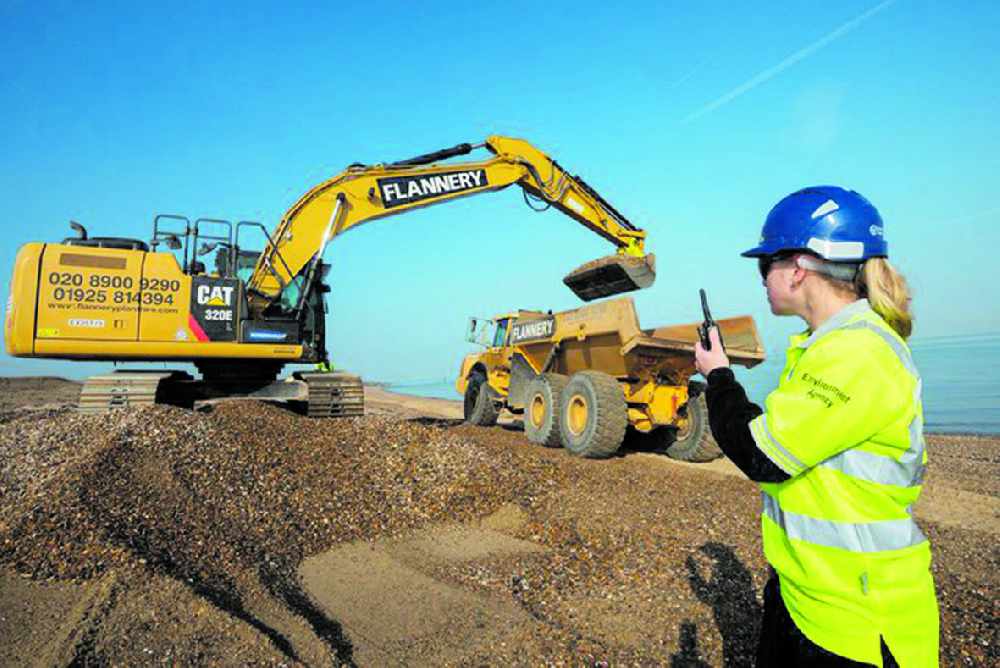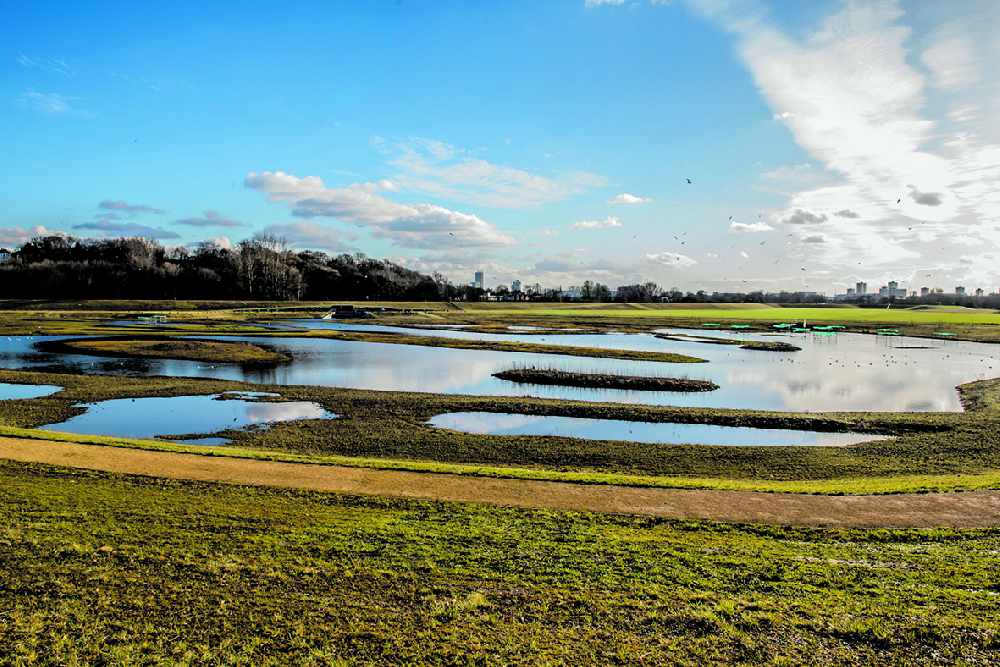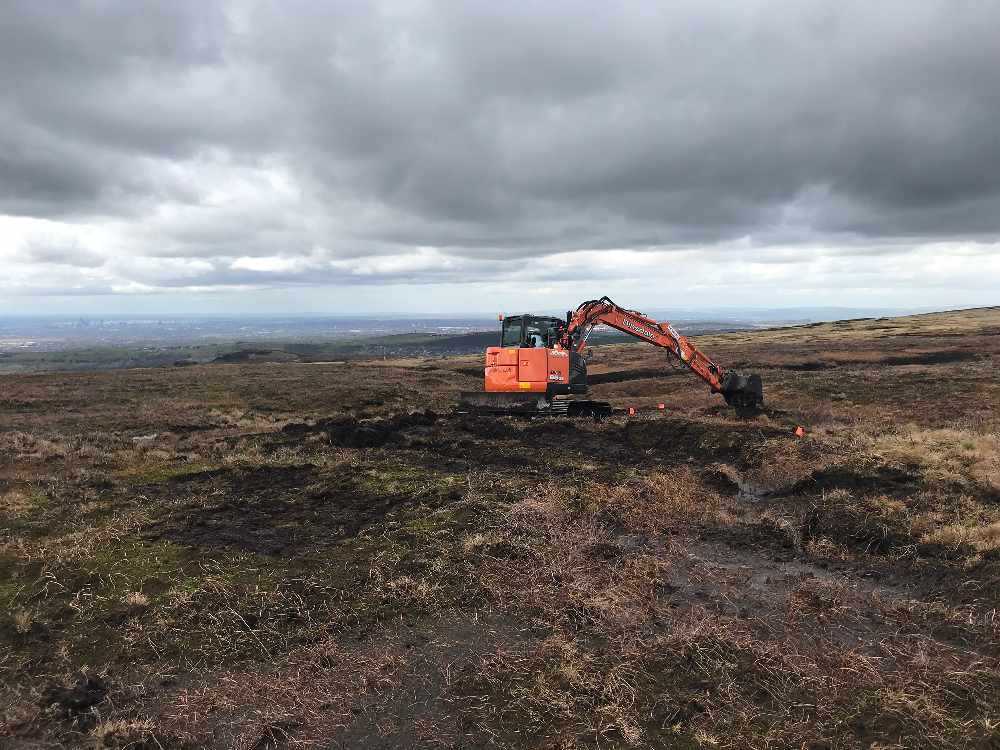
Environment Agency Area Director Lesley Worswick looks back over the last month and how the agency is hitting new milestones in the efforts to protect homes from flooding with a little help from their friends'. Work on the moors above Stalybridge also continues...
For me March is always an exciting month. After the long, cold, and often wet periods of January and February, it feels like the world is getting a little bit lighter and brighter.
This year, it also seems to be the month of better news. Certainly, this has been the case for us here in the Environment Agency as we announced the significant milestone of 300,000 homes now better protected from the risk of flooding and coastal erosion.
It hasn’t always been easy to bring these major infrastructure projects in on time and on budget and it’s not something we would have been able to achieve alone.
Thankfully, we ‘got by with a little help from our friends’ (to paraphrase the Beatles) and partners in local authorities, Wildlife Trusts, Utility Companies and of course the North West Regional Flood and Coastal Committee.
The success of this programme comes down to a numbers game; 300,000 homes nationally, thousands of businesses and major pieces of infrastructure protected and acres upon acres of habitat improved since 2015.
But there is so much more to these schemes than community, economic and environmental improvements alone. The sense of security these schemes bring to people can’t be overlooked, particularly when we consider the part schemes such as Salford, Didsbury, Sale and Westleigh played in recent storms such as Dennis, Ciara and Christoph.

SALFORD FLOOD BASIN: Creation is a wildlife haven.
There is no doubt that the climate emergency is bringing more extreme weather to our communities and since 2015, we have also had to take a more innovative look at our flood resilience measures to enable us to fully deliver on our promise to protect people and the environment from floods and coastal erosion.
Although there may be some bias here, I believe we have some of the finest people building on that promise here in Greater Manchester, Merseyside and Cheshire.
Approaching flood risk with a combination of traditional and softer solutions is not new to our engineers. They have been putting the environment at the heart of our flood resilience interventions for many years.
We can see this in action in Salford. The £10 million scheme, is one of the most significant defences that we have constructed in recent years, alongside our partners. It delivers on a long-held vision to not only create a flood storage basin - to reduce the risk of flooding from the River Irwell - but also to boost to local wildlife populations by providing a high quality urban wetland habitat.
The multi-million pound scheme has increased protection to more than 2,000 homes and businesses across Lower Broughton and Lower Kersal.
The entire 28 hectare flood basin sits within a loop of the River Irwell and protects surrounding properties by holding up to 650 million litres of water or the equivalent to 260 Olympic-size swimming pools!
The flood embankments are also planted with wildflower habitat, to attract pollinating species such as lady birds, moths, butterflies and bees.
Ultimately, flood resilience depends on a blend of engineering and environmental solutions and our local teams have also been busy enhancing the use of natural flood management over the last six years, better protecting communities while tackling climate change and benefitting nature.
Two examples are Smithills near Bolton and Stalybridge. At Smithills, log dams and tree planting are helping to store water in upland areas in order to reduce flood risk for communities downstream in Bolton.
The dams store the equivalent of four Olympic swimming pools’ worth of water upstream.
Around 90,000 native broadleaf deciduous trees have also been planted to intercept surface water, create habitat for the local wildlife populations, and help with carbon sequestration, with more to come!
In Stalybridge, the aim of the project is to utilise moorland and mosses to capture carbon, restore damaged peatland and slow the flow of flood water through the construction of “leaky barriers.”

DAM DEFENCE: Slowing the flow of flood water through the construction of “leaky barriers.”
Ten innovative, large stone dams have been built along the moorland by placing boulders from a local quarry at selected pinch-points along the watercourse.
These, along with 143 peat dams, 29 small stone dams and 20 timber dams can hold back over 3,000 cubic meters of storm water and help prevent flooding.
All of these projects both traditional and natural are fantastic examples of flood adaptation in action, but there’s a lot more to do.
We’ve already invested £2.6 billion to protect communities across England since 2015, with £115 million being spent in Greater Manchester, Merseyside and Cheshire alone.
We now need to redouble our efforts to make our communities more resilient in future. But let’s take a glass half full approach.
A record £5.2 billion is being invested in 2,000 new flood and coastal erosion schemes over the next six years, better protecting another 336,000 properties.
We are already getting there with schemes such as Radcliffe and Redvales and Rochdale and Littleborough progressing at pace.
These schemes will protect a further 1,800 properties and critical infrastructure such as roads and railway from flooding.
The figure of 300,000 homes better protected is a huge milestone and one I am proud to be a part of. Now we have reached that target, let’s look forward to using the next six years of investment in our flood and coastal defences to ‘build back better’ by making properties more resilient to flooding, and ‘build back greener’ by working with nature to make us more resilient to climate change.
Main image:
BUILDING WORK: The Environment Agency is aiming to ‘build back better’ in efforts to ‘turn the tide’ against climate change.


 Hyde theatre receives £20K funding boost from the People's Postcode Lottery
Hyde theatre receives £20K funding boost from the People's Postcode Lottery
 TAMESIDE: What each political party in Tameside is offering to voters at the local elections this year
TAMESIDE: What each political party in Tameside is offering to voters at the local elections this year
 GREATER MANCHESTER: We asked every Greater Manchester mayoral candidate the same questions – this is what they said
GREATER MANCHESTER: We asked every Greater Manchester mayoral candidate the same questions – this is what they said
 "The pandemic changed my outlook on life": The Denton mum who started a business from her bathroom
"The pandemic changed my outlook on life": The Denton mum who started a business from her bathroom


